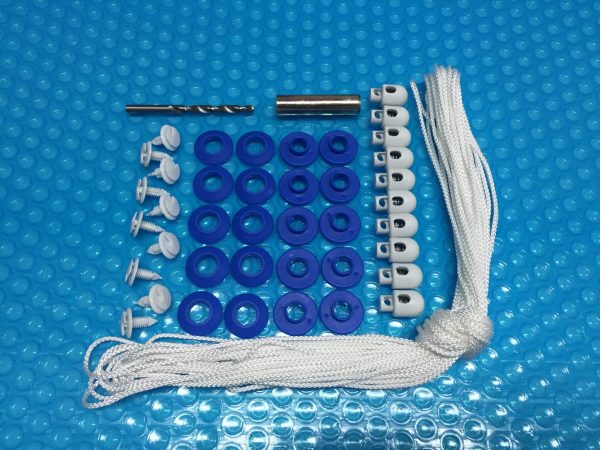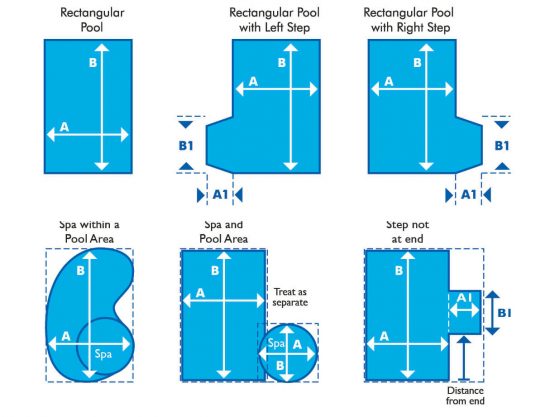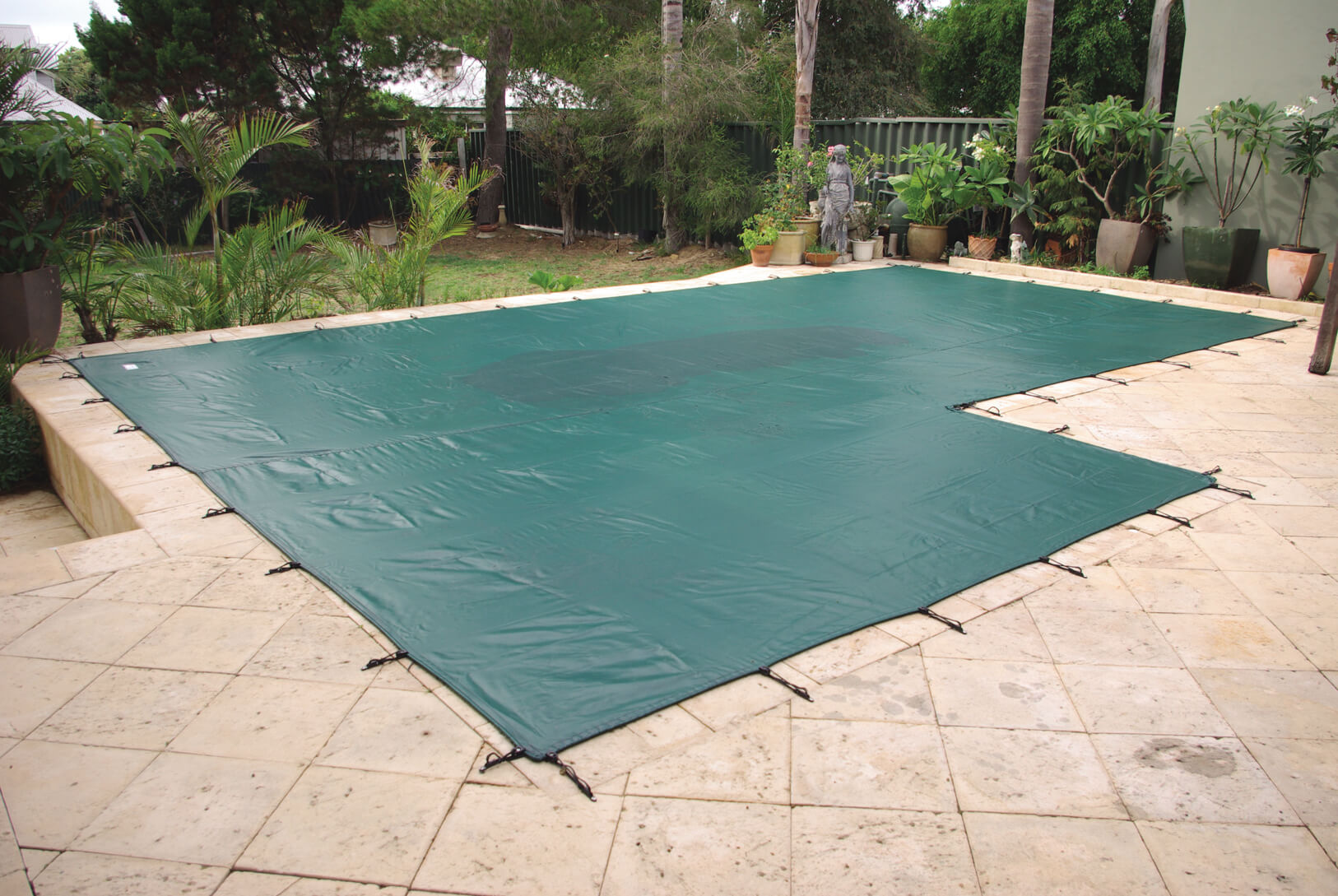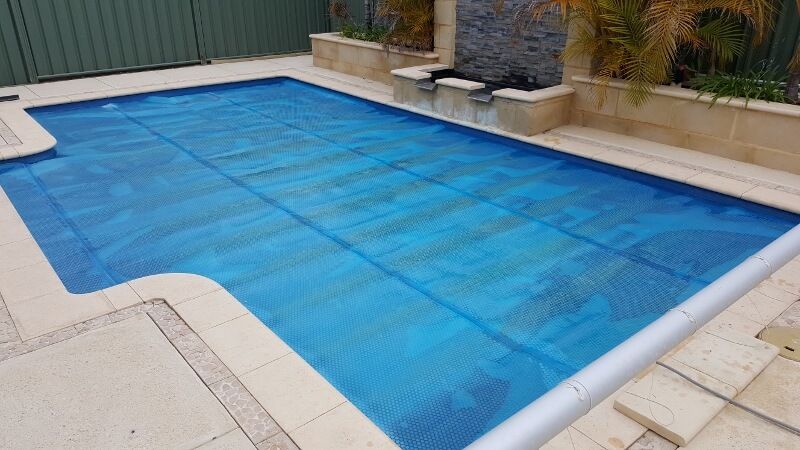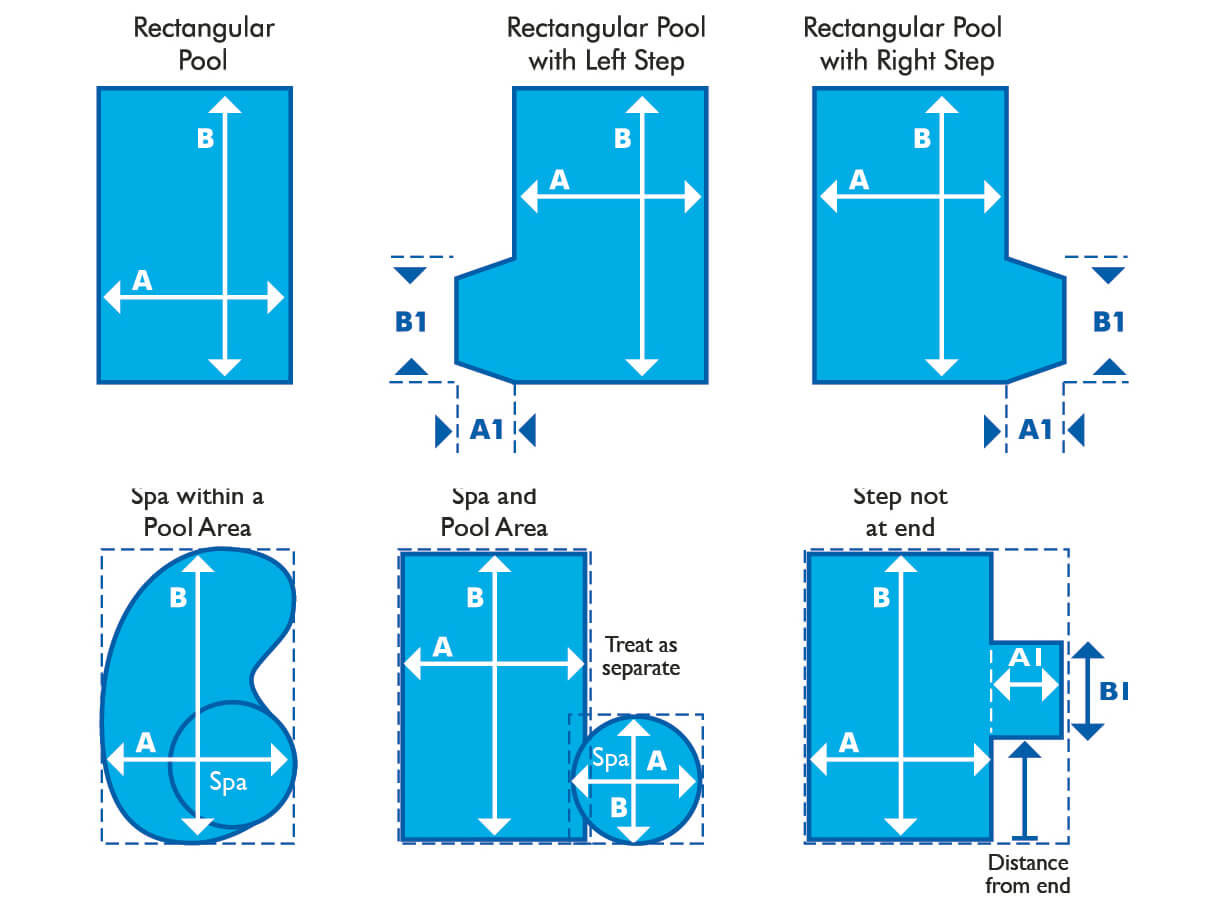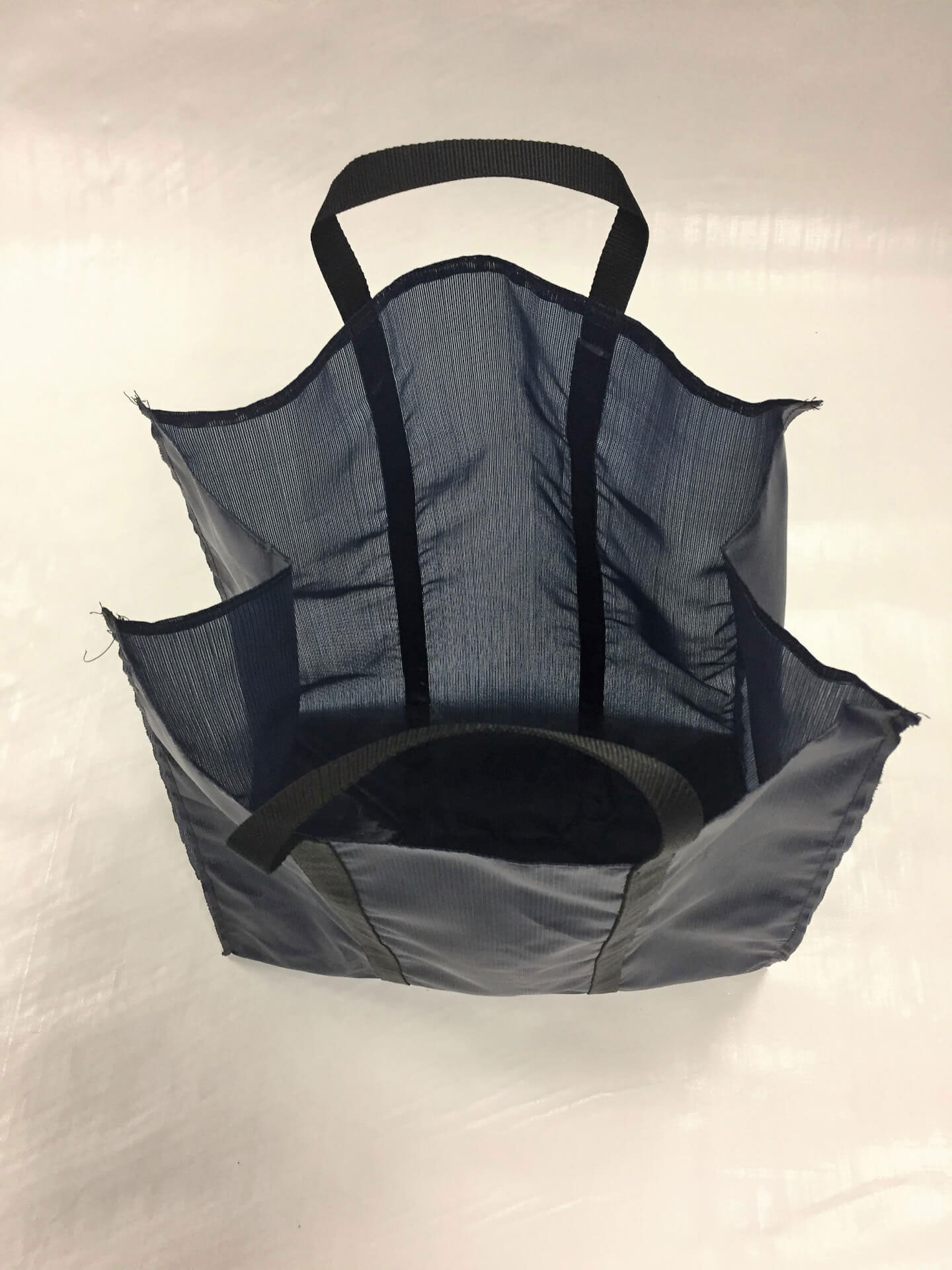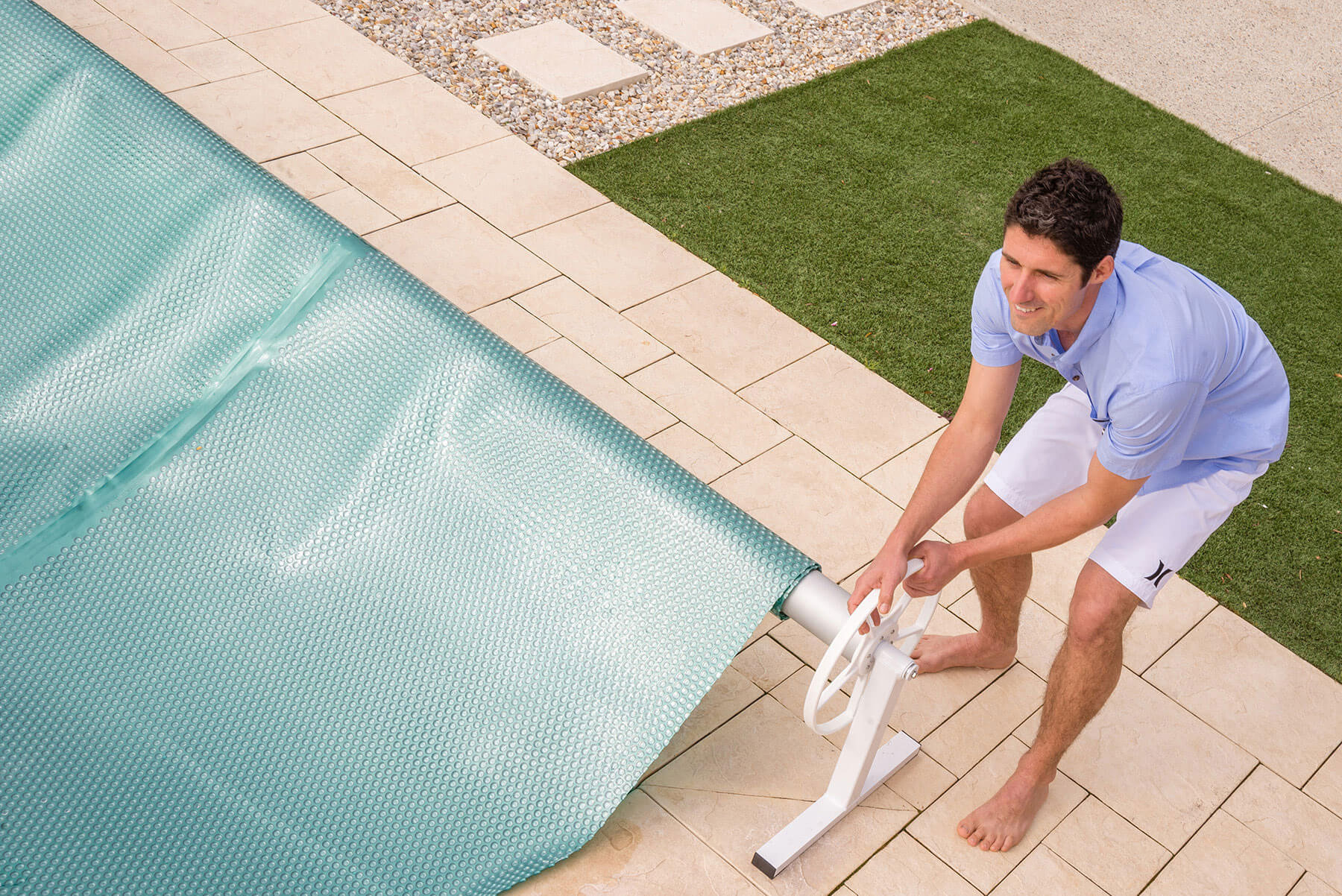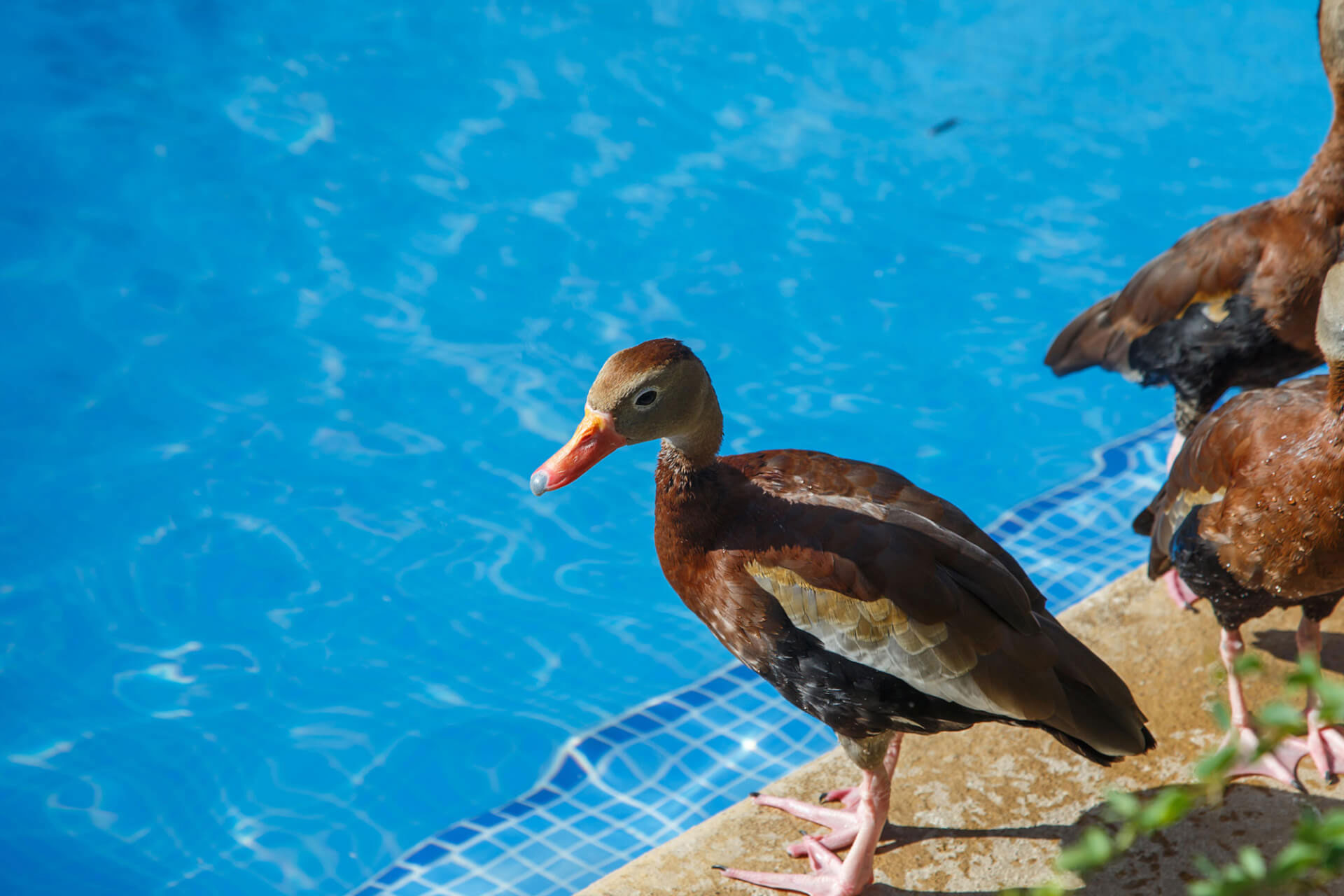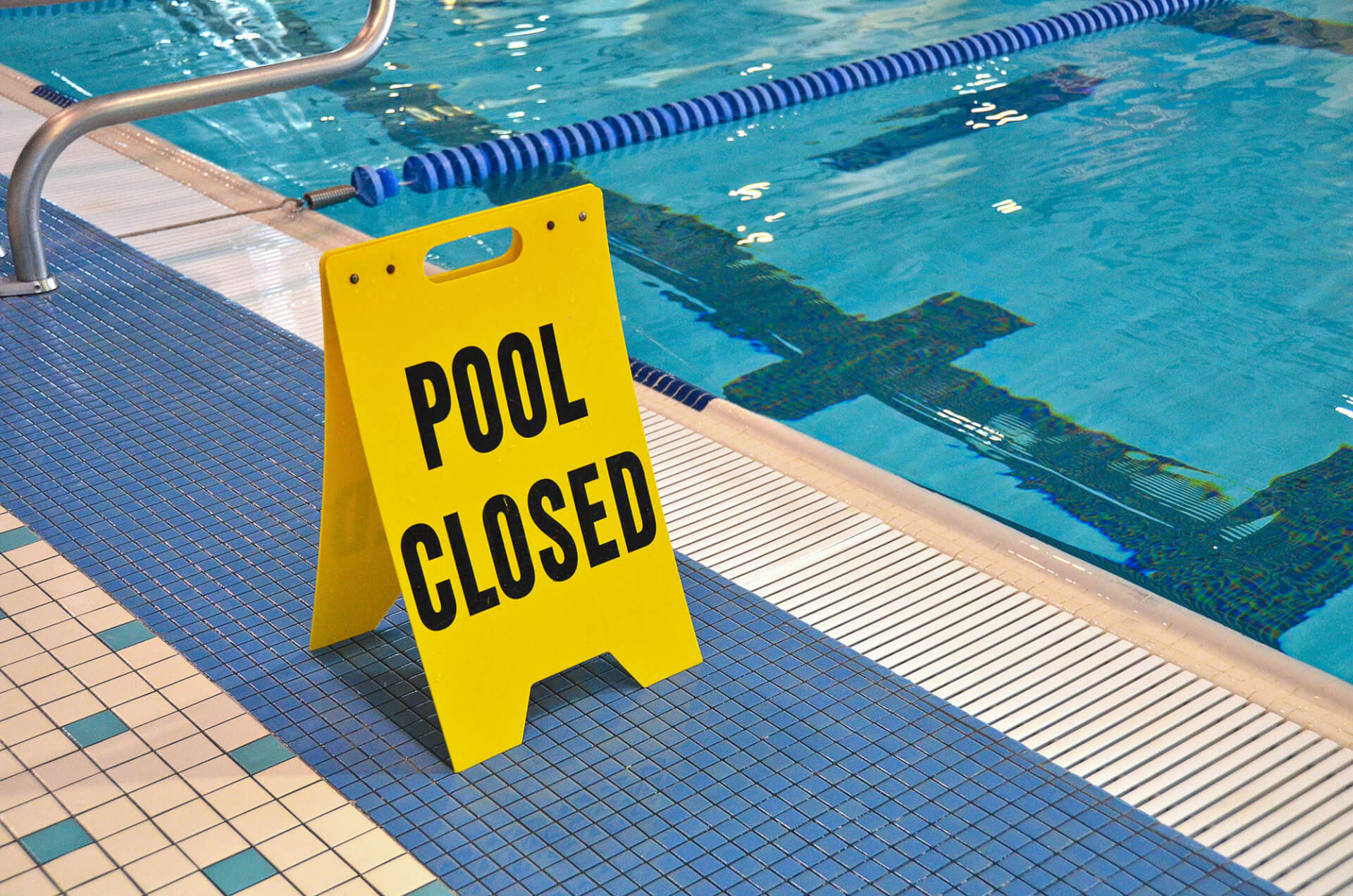Step areas are often tricky business when it comes to pool cover quoting. Let us help simplify the process and share some tips to make it easier for you to measure, quote and answer those difficult questions.
Some frequently asked questions:
What do you mean ‘step area’?
Every Daisy pool cover is custom made and welded in rectangles. If there is a portion of the pool that protrudes out from the main body eg the steps, we can weld on rectangles to cover these sections. The terminology ‘step area’ is the term used to describe the section of the pool cover that we weld to the side.
What if I have a swim out and not a step area?
It does not matter if the section protruding out is a swim area, spa or anything else. For all pool covers, this is still treated as a ‘step area’. We like to keep it simple!
What is the difference between a left or right step area?
Typically a step area is located near one of the corners. If you are sanding at the step area end and looking at the pool, the step area is usually either to your right or left. If it is by your right foot, we call this a Right Hand step area; on the left side, it is the Left Hand step area.
Does it matter where my step area is?
As long as we can locate where the ‘step area’ is, we can weld the additional rectangle to the main body of the pool cover.
What if I have more than one step area?
If you have more than one step area, say you have actual steps on the right as well as a protruding spa also on the right but at the other end of the pool, we would call then a Right Hand step area with a Right Hand Top step area.
How do I best measure up for a pool cover?
When you measure a step area, remember we make the pool cover in rectangles, so we need the length and width of the main body of the pool, then the length and width of the step area. We then weld the two rectangles together to have the one cover.
We will also need to know where the step area or areas are e.g. left or right and if at the end of a pool or somewhere else. If at the end of the pool, we’ll need to know how far from the end of the pool cover it is.
What if I have a different shaped pool?
Don’t worry if you have a unique pool – even if it has lots of curves! All we’ll need is the maximum length and width of the pool and we’ll supply a rectangular cover for on-site fitting.
To measure a step area, remember we are adding it to the main body of the pool cover. If the step area does come outside of the main body, simply measure how long and wide the step area is.
If the step area inverts inwards and it is not further out than the main body, then you don’t need any extra material to cover it. You’ll just have to trim away the excess.
If the pool is tricky, simply take a photo and sketch then email it through to [email protected]. We’re always there to help.
Why are the pool cover supplied from Daisy rectangular?
By supplying our pool covers trimmed and welded as rectangles, you’ll get the one pool cover almost ready to go. All you have to do is trim to exact requirements on site using the swimming pool as the real life template. This minimises the risk if you have a slight difference in your measurements and ensures less mistakes and wastage. Oh and we have Daisy scissors to help if you need a pair.
Do you cover a step area or not?
Generally the answer will be yes.
However, if the step area is particularly hard to get to every time you roll up the cover then we would advise not to cover it. Likewise, if there is a centre step area section, like a seat built into a wall, that is hard to get to, we would also advise to leave this step area uncovered to make using the pool cover easier.
How do I price up a step area?
Pricing a step area is the same as pricing the pool cover. Simply multiply the length by the width (to get the square meters), add the square meters of the step area to the square meters of the main pool size. Multiply the total square meters by the cover price and you’ve got it!
Saving costs: Don’t just take the maximum width of the pool including the step area as the width because once you have cut out the step area there will be a lot of wasted material that the customer has paid for.
How do I roll up a pool cover with a step area?
Step areas are normally at the shallow end while rollers are normally located at the deep end away from the entry and exit to the pool.
To recover the pool cover, fold the step area over onto itself to create a clear line of sight to the roller, then roll up the pool cover. Folding and leaving the step area folded when it is on the roller is fine.
What are the limitations to having a step area?
In rare cases, the step area is located at the roller end, which means that it will need to be folded at the beginning of the roll. This is not ideal as it will create an uneven roll and will always veer off one way.
The size of the step area can also be a challenge. It is hard to fold a step area that is over 2–3 meters long or over 1m wide.
We can weld a step area to any size, however folding larger step areas can be awkward.
Help is an email away.
If you need help in any way please don’t hesitate to contact us at [email protected].

